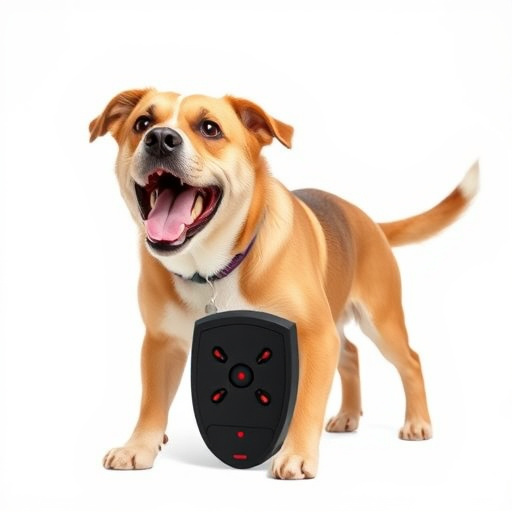Sonic dog repellers protect your property using high-frequency sound waves, effective in outdoor gardens, patios, or fences, and indoors for open floor plans. For optimal results, strategically place them along fencelines in high-traffic areas, with a clear line of sight, avoiding neighbors' privacy. Choose weatherproof models for outdoors, adjustable frequency settings for persistent intruders, and consider multiple modes. Install in frequent dog access points, secure and point devices at problems spots, test regularly, maintain clear areas, and adjust settings based on environment.
“Discover the power of sonic dog deterrents—a humane and effective solution for keeping your walks free from unwanted canine visitors. This comprehensive guide unravels the technology behind these repellers, offering insights into their functionality and how they can be strategically installed for optimal protection. From understanding the ideal setup locations to choosing the right device for your needs, we provide practical tips for maintenance and optimization. Learn where to install your sonic dog repeller effectively and reclaim your walking spaces.”
- Understanding Sonic Dog Deterrents: How They Work
- Ideal Installation Locations for Maximum Effectiveness
- Choosing the Right Sonic Repeller for Your Needs
- Tips for Maintaining and Optimizing Your Sonic Dog Protection System
Understanding Sonic Dog Deterrents: How They Work
Sonic dog deterrents are innovative devices designed to protect your property and ensure a peaceful walk with your pet. These repellers use high-frequency sound waves, often above the human hearing range, to create an unpleasant sensation for dogs. When activated, the device emits a distinct sound that disrupts a dog’s sense of balance and orientation, encouraging them to leave the area quickly and safely.
The key to their effectiveness lies in where you install them. For outdoor spaces like gardens, patios, or fences, strategically placing these repellers can create a buffer zone free from unwanted canine visitors. They are particularly useful for areas where traditional fencing might not be feasible or aesthetically pleasing. Additionally, they can be deployed indoors, especially in homes with open floor plans, to deter dogs from certain rooms or high-value areas without the need for extensive barrier systems.
Ideal Installation Locations for Maximum Effectiveness
When considering where to install a sonic dog repeller, it’s crucial to select locations that maximize its effectiveness and minimize false triggers. Fenceline installation is ideal, as it ensures consistent coverage along your property perimeter, deterring dogs from entering. Choose areas with high dog traffic or known problem spots, such as near garbage cans or common resting places.
Additionally, consider the repeller’s range and frequency when selecting installation points. Place them at strategic locations where sound projection is optimal, avoiding tall structures or overhanging branches that could block the signal. Ensure a clear line of sight to effectively communicate with potential dog intruders while also respecting neighbors’ properties and privacy concerns.
Choosing the Right Sonic Repeller for Your Needs
When selecting a sonic dog deterrent, understanding your specific needs and preferences is key. These devices emit high-frequency sound waves that are unpleasant to dogs, encouraging them to stay away from treated areas. However, not all repellers are created equal; factors like range, frequency, power level, and weather resistance vary significantly.
Consider where you plan to install the sonic dog repeller. Whether it’s in your yard, garden, balcony, or even indoors, each location has unique challenges. For outdoor spaces, opt for a weatherproof model capable of covering a substantial area. If you’re dealing with persistent dog intruders, look for devices with adjustable frequency settings and stronger output levels. Additionally, check if the repeller offers multiple modes, such as automatic activation upon detection or constant emission, to suit different situations and preferences.
Tips for Maintaining and Optimizing Your Sonic Dog Protection System
To get the most out of your sonic dog deterrent system, regular maintenance and optimization are key. Start by identifying the best where to install sonic dog repeller—typically in areas where dogs are known to congregate or enter, such as fences bordering parks or gardens. Ensure the device is securely mounted and pointed directly at potential problem spots. Regularly test the system to confirm it’s functioning optimally, as batteries can drain over time. Keep the area around the repeller clear of debris that could interfere with its signal.
Additionally, consider environmental factors. Sonic deterrents work best in open spaces where sound waves can travel freely. Trees, buildings, or other obstacles might block or reflect the sound, reducing its effectiveness. Periodically adjust the sensitivity settings based on changing weather conditions—windy days might require lower settings to avoid false triggers. Regular cleaning and inspections will also ensure your repeller remains in top working condition, providing continuous protection for your walking areas.
Sonic dog deterrents offer a humane and effective solution to keep dogs away from sensitive areas. By understanding their operation, strategically choosing installation locations like yards, parks, and public spaces, and selecting the right repeller for your needs, you can create a peaceful environment for both residents and canines. Regular maintenance ensures optimal performance, allowing you to protect your space with confidence. Remember, where you install your sonic dog repeller is key to maximizing its effectiveness as a game-changer in keeping unwanted canine visitors at bay.
